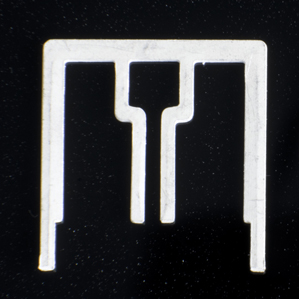Aereo Ruling Means Uncertainty for Cloud Streaming Services
In the U.S. Supreme Court’s smackdown of Internet TV upstart Aereo today, some legal watchers see a threat to other cloud storage and content-streaming models, even though the court tried to tailor its decision as narrowly as possible to the broadcasting context.

Aereo burst on the scene two years ago with a new business and technology model: capture free over-the-air TV broadcasts on tiny antennas in data centers—one antenna per customer—and send that content over the Internet to individual subscribers, or allow them to record it using a cloud-based DVR service.
But by a 6-3 vote in a ruling released Wednesday, the court agreed with broadcasters in finding that Aereo’s model was functionally no different from what cable companies are doing, except that cable TV companies pay broadcasters fees and Aereo does not. The court also found that Aereo was in effect enabling a public rebroadcast of copyrighted works. It was a major blow, and a spectacular turnaround, for the startup (see “Aereo’s on a Roll”).
At multiple points in the ruling, the court tried to make clear that it was only talking about television broadcasting, not other cloud streaming models.
Justice Stephen Breyer, writing for the majority, said “the public” means “members of the public who pay primarily to watch broadcast television programs, many of which are copyrighted.”
Breyer sought to distance the ruling form other cloud services, adding, “We have not considered whether the public performance right is infringed when the user of a service pays primarily for something other than the transmission of copyrighted works, such as the remote storage of content” and “In addition, an entity does not transmit to the public if it does not transmit to a substantial number of people outside of a family and its social circle.”
Yet John Bergmayer, a staff attorney at Public Knowledge, a think tank in Washington, D.C., predicts that enterprising lawyers could find plenty in the ruling with which to attack other cloud services.
By some reckoning, he says, Amazon’s music locker and similar services could someday look comparable to Aereo. “If multiple people upload the same popular song, at some point they will be listening to them at the same time,” he says. “Is it now just a question of how many people are listening to the content simultaneously that determines whether the Supreme Court’s principle applies?”
While there is plenty in the ruling that cloud providers could also use to defend themselves, there’s reason to worry, he says. “My basic take on this is it will lead to uncertainty and litigation, because there is enough ammunition in there for future lawsuits.”
In a dissent, Justice Antonin Scalia said the opinion was “built on the shakiest of foundations,” adding, “The Court vows that its ruling will not affect cloud-storage providers and cable television systems … but it cannot deliver on that promise given the imprecision of its results-driven rule.”
Others disagree. Andrew Goldstein, a lawyer at Freeborn & Peters, a law firm in Chicago that often represents content providers, is skeptical of worries that copyright holders could say a storage service like Google, Dropbox, or Amazon is violating copyright when a user accesses his or her own content.
“I think the Supreme Court did the best job they could at making this as narrow an opinion as they could,” he says. “They deliberately said they are not ruling on future technologies that are not before them.”
While broadcasters were thrilled, Aereo CEO and founder Chet Kanojia released a statement calling the decision “a massive setback for the American consumer” that “sends a chilling message to the technology industry.”
Keep Reading
Most Popular
Large language models can do jaw-dropping things. But nobody knows exactly why.
And that's a problem. Figuring it out is one of the biggest scientific puzzles of our time and a crucial step towards controlling more powerful future models.
The problem with plug-in hybrids? Their drivers.
Plug-in hybrids are often sold as a transition to EVs, but new data from Europe shows we’re still underestimating the emissions they produce.
Google DeepMind’s new generative model makes Super Mario–like games from scratch
Genie learns how to control games by watching hours and hours of video. It could help train next-gen robots too.
How scientists traced a mysterious covid case back to six toilets
When wastewater surveillance turns into a hunt for a single infected individual, the ethics get tricky.
Stay connected
Get the latest updates from
MIT Technology Review
Discover special offers, top stories, upcoming events, and more.